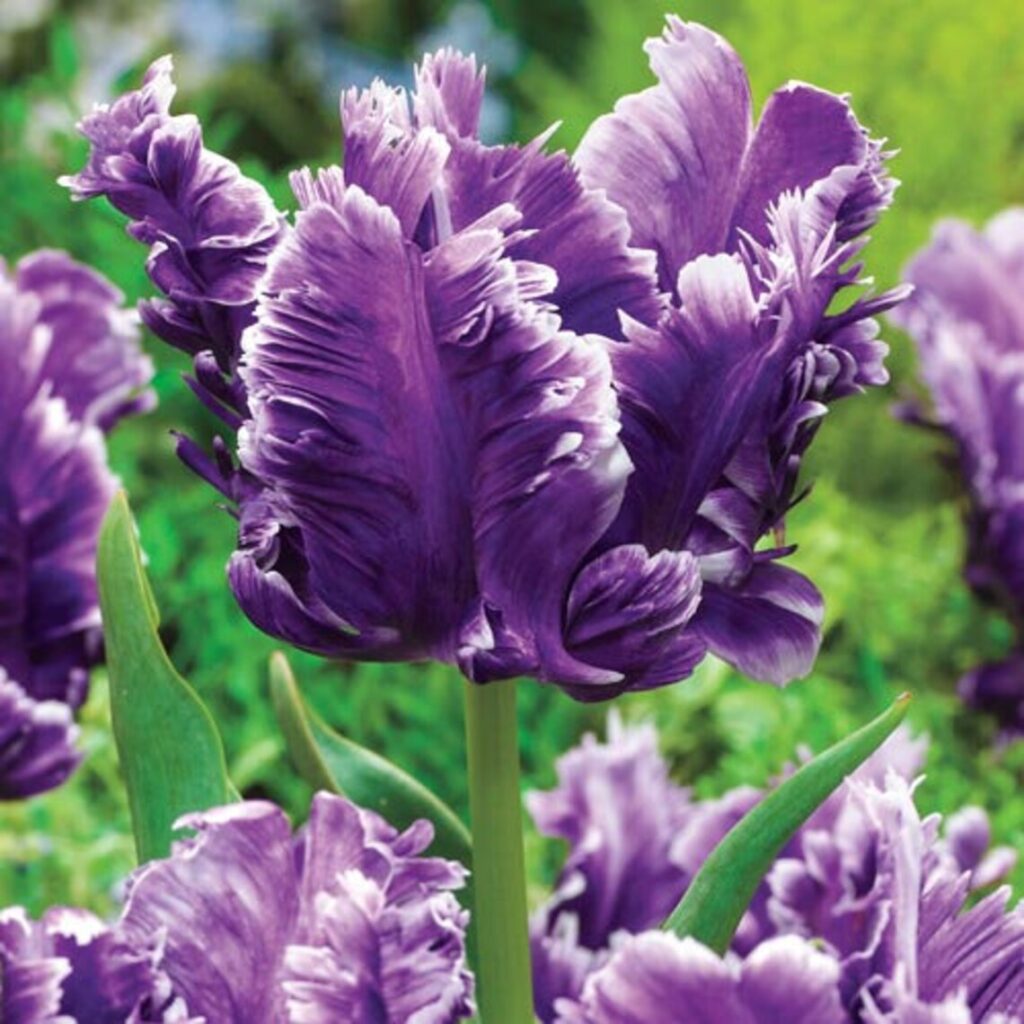Informational

Parrot tulips are a group of tulip cultivars that are known for their unusually shaped blooms, which feature fringed or ruffled petals that resemble the feathers of a parrot. These tulips come in a wide range of colors, including red, yellow, pink, orange, purple, and green.
Mysterious parrot tulip bulbs are a specific variety of parrot tulip. They have deep purple petals that are streaked with black, giving them a dramatic and mysterious appearance. These tulips are particularly popular for use in cut flower arrangements, as their unique coloring and frilly petals make them stand out from other flowers.
When planting mysterious parrot tulip bulbs, it’s important to choose a location with well-draining soil and full sun to partial shade. The bulbs should be planted in the fall, before the first frost, at a depth of about 6 inches. They will typically bloom in late spring or early summer, and can reach a height of 18-24 inches.
Like all tulips, mysterious parrot tulips are perennial bulbs, meaning they will come back year after year if cared for properly. After the flowers have faded, it’s important to allow the foliage to die back naturally, as this will help the bulbs store energy for next year’s growth. The bulbs can be divided and replanted every few years to keep them healthy and vigorous.
Care Guide
Here are some tips on how to take care of mysterious parrot tulip bulbs:
- Planting: Mysterious parrot tulip bulbs should be planted in the fall, about 6 inches deep and 4-6 inches apart, in a location with well-draining soil and full sun to partial shade.
- Watering: Tulips generally don’t need a lot of water, but it’s important to keep the soil consistently moist during the growing season, especially during periods of drought.
- Fertilizing: When planting the bulbs, it’s a good idea to mix some bulb fertilizer into the soil. After the tulips have bloomed, you can fertilize them again with a balanced fertilizer.
- Deadheading: To keep the plant looking neat and tidy, it’s a good idea to remove the spent blooms as soon as they start to wilt. This will also help the plant conserve energy for next year’s growth.
- Mulching: Mulching around the base of the tulip plant can help to conserve moisture and keep the soil cool.
- Winterizing: After the foliage has died back naturally, you can cut it back to ground level. Covering the soil around the bulbs with a layer of mulch can help to protect them from extreme cold and temperature fluctuations.
- Dividing: If the tulip bulbs become overcrowded or start to produce smaller blooms, it may be time to divide them. This should be done after the foliage has died back and the bulbs are dormant. Dig up the bulbs, separate them, and replant them in a new location.





